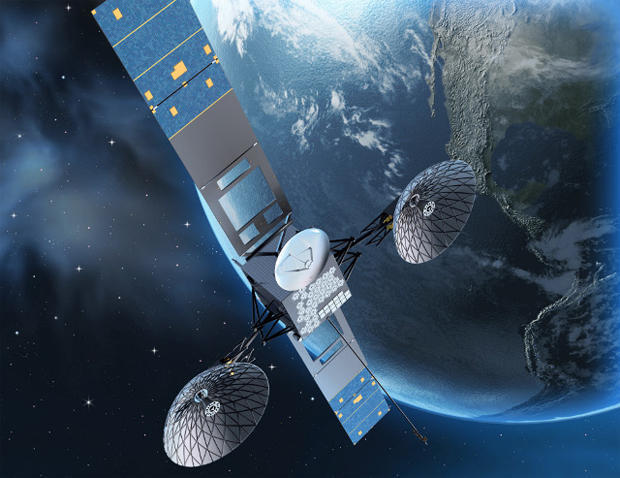Atlas 5 rocket blasts off, carrying $400M NASA satellite into space
A United Launch Alliance Atlas 5 rocket boosted a $408 million NASA communications satellite into space Friday, the latest in a series of powerful voice, video and data relay stations used by space station crews and NASA science probes like the Hubble Space Telescope.
The $132 million rocket's powerful Russian-built RD-180 first stage engine flashed to life at 8:29 am. EDT (GMT-4), majestically pushing the 19-story-tall booster away from pad 41 at the Cape Canaveral Air Force Station.
Launch was delayed by 26 minutes because of a second stage engine temperature issue, but the problem was resolved, the countdown picked up and the Atlas 5 shot away through a clear sky atop 860,200 pounds of thrust, accelerating through the speed of sound 80 seconds after liftoff.
A little more than two-and-a-half minutes later, now out of the dense lower atmosphere, the RD-180 shut down, the first stage fell away and the ascent continued on the power of an Aerojet Rocketdyne RL10-C engine. Eighteen minutes after launch, the engine competed the first of two burns, shutting down after putting the spacecraft into a preliminary parking orbit.
A second one-minute burn was planned to complete the launch phase of the mission, putting the 7,600-pound Tracking and Data Relay Satellite -- TDRS -- into an elliptical orbit with a predicted low point of 2,900 miles and a high point of just over 22,230 miles.
Over the next two weeks, an on-board thruster will be used to circularize the orbit at 22,300 miles above the equator where satellites take 24 hours to complete one orbit and appear stationary in the sky -- a key requirement for communications stations.
Launch originally was planned for early August, but the flight was delayed when one of two omni antennas, used for communications during the climb to geosynchronous orbit, was damaged when it was hit by a component in the system used to lift the spacecraft for mounting in the Atlas 5 nose cone fairing.
The antenna was replaced by a spare, but a launch slot on the Air Force Eastern Range, which provides tracking and support for all rockets launched from the East Coast, was not available until Friday.
Once operational, the TDRS-M satellite will join a constellation of relay stations positioned over the Atlantic, Indian and Pacific oceans. The satellites relay voice, video and data to and from the International Space Station and support a wide variety of science satellites in Earth orbit, including the Hubble Space Telescope and NASA's fleet of Earth-observation satellites.
Twelve TDRS satellites have been launched since 1983. Two have been retired and one was destroyed in the 1986 Challenger disaster.
TDRS-M is the third in the latest generation built by Boeing. All three feature phased array S-band antennas that can pull in signals from five spacecraft at once or transmit to one satellite at a time. In addition, two 15-foot-wide steerable antennas can handle high-speed Ku-band communications, along with S-band and Ka-band traffic.
The TDRS system, using upgraded ground stations at White Sands, N.M., and Guam, provides near continuous communications coverage for the International Space Station and other government spacecraft in lower orbits. The newest TDRS satellites have a design life of at least 15 years.
"The Boeing TDRS series ... is notable for the large, 15-foot single access antennas, which lock on and track (satellites) in low-Earth orbit," Andrew Kopito, a senior Boeing manager, said before the TDRS-L launch in 2014.
"Remember that TDRS satellites (are) orbiting Earth over 22,000 miles above the equator. The platforms they communicate with are in orbits typically 300 to 600 miles above the Earth. This means the TDRS satellite must track an object over 22,000 miles away that is moving across the face of the Earth roughly every 45 minutes."
The ability of TDRS satellites to lock onto and track low-altitude satellites like Hubble "is analogous to standing at the top of the Empire State Building and tracking an ant as it marches its way down the sidewalk," he said. "A truly remarkable capability."





